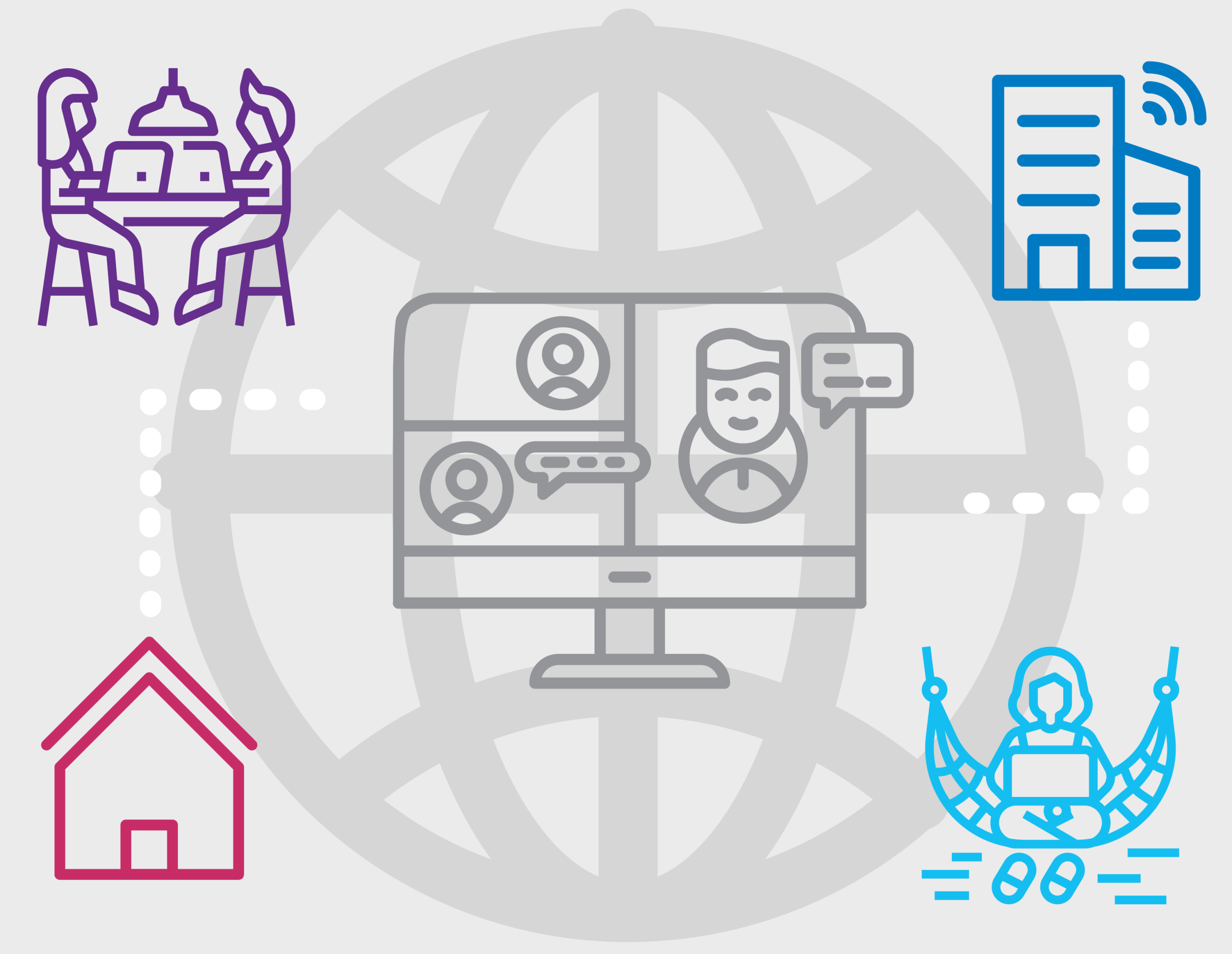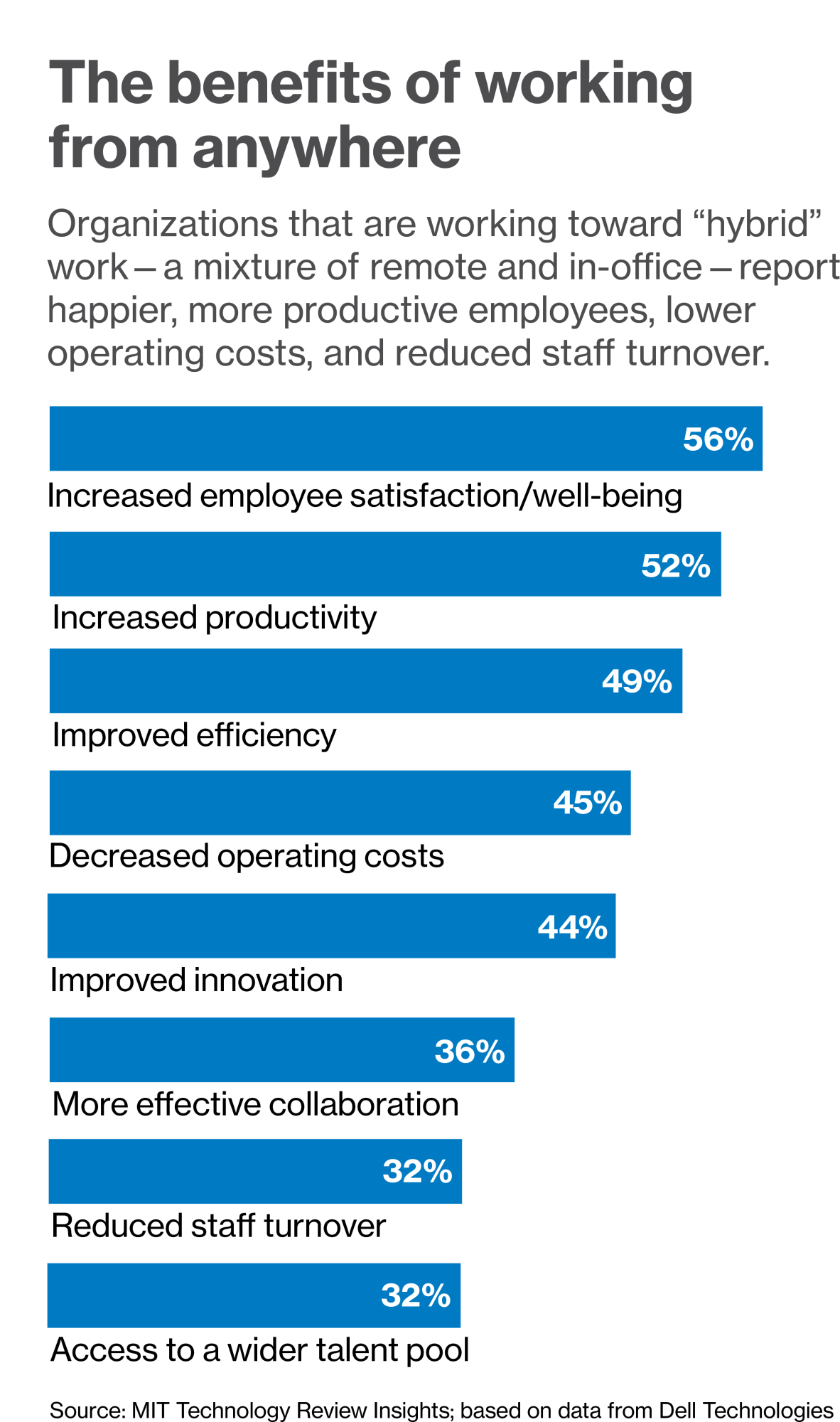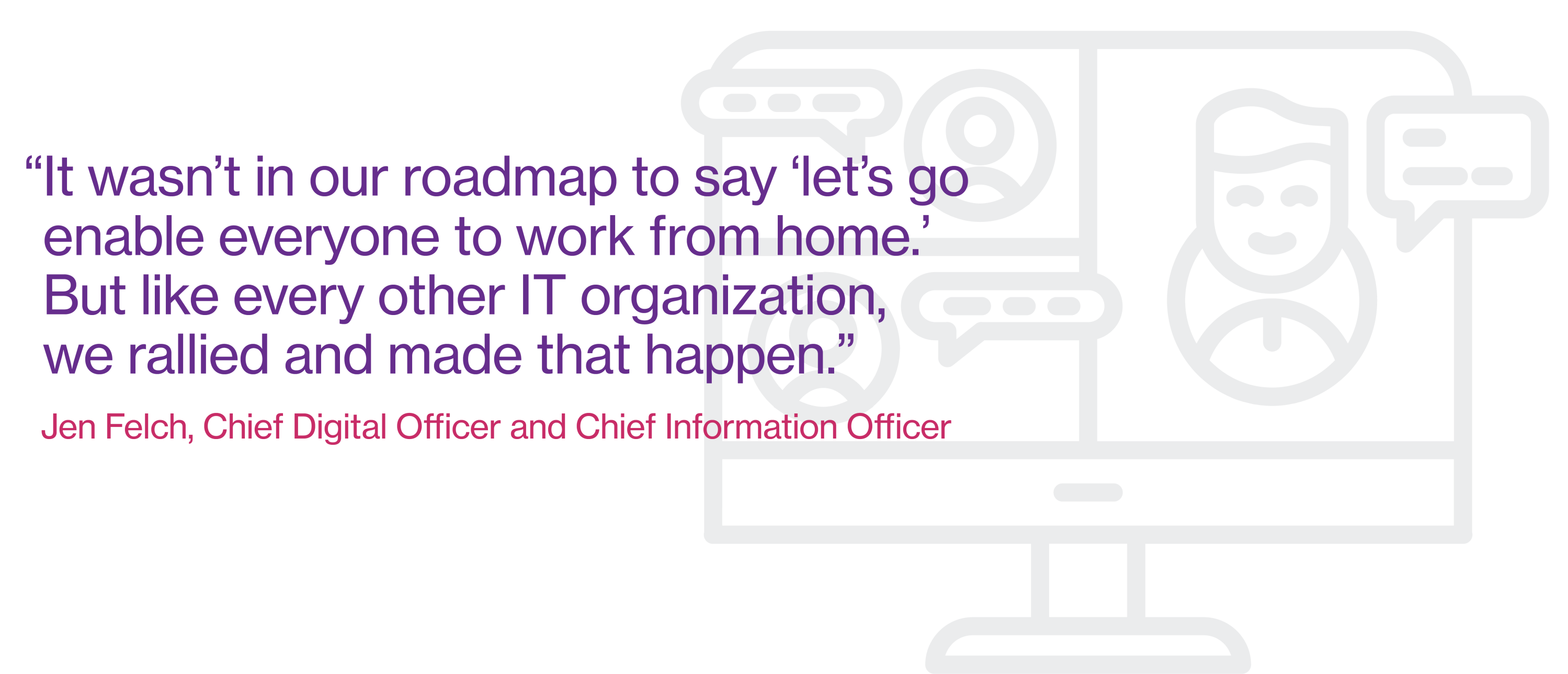Shaping the future of hybrid work
“Workplace” used to be defined by physical location. Even when employees were hard at work elsewhere, from home or on the road, they were “out of the office.” When offices began to shut down in March 2020 to slow down the covid-19 pandemic, few realized that they were embarking on a fundamental and enduring transformation of the very concept of “workplace” and their relationship to it. Both workers and managers had to adjust on the fly as the weeks rolled by with no end in sight. Many companies had to deal with enabling a newly remote workforce while keeping workers productive and figuring out how the pandemic would affect their business, for better or worse. As everyone settled into the “new normal”—children and pets dropping in on video conferences, people learning how to blur their backgrounds to hide their makeshift home offices—the necessary changes began showing the way to a workplace future that might improve on the “old normal.”

Computing and infrastructure giant Dell Technologies found itself re-examining its own assumptions about the world of work and redefining every expectation, says Jennifer Saavedra, the company’s chief human resources officer. “Early on I heard people say, ‘I just can’t wait to get back to doing things the way they were.’ That’s not ever a strategy for success,” Saavedra says. “It’s about reflecting on these last 18 months. What have we learned? What are some of the great things we want to carry forward? What were some of those challenges or obstacles? How do we renew expectations?”
Saavedra sees many “great things”: opportunities to be more efficient, productive, and inclusive, and ways for the reimagined workplace to achieve goals that were impossible before.
For example, Dell’s salesforce of more than 25,000 could never meet in one place at one time—let alone the army of human resources, finance, and marketing staff that support them. Like many companies, Dell used to hold in-person training and leadership events for all sales managers, trusting that the strategies and the sense of purpose shared at those meetings would make it out to the rank and file.
The pandemic changed all that. Suddenly, the managers couldn’t meet in person, but everyone could meet virtually, on video-conferencing platforms such as Zoom. Although it was a great opportunity for connection and communication, figuring out how to engage that many people in a virtual environment was a challenge, Saavedra says. “You don’t just try to replicate what you did in an in-person or classroom experience.”
Resources for developing skills or absorbing new material, often delivered in group or class settings in the old days, moved online to the Dell Learning Studio, where people could visit individually at their leisure. The group component of the events, now held virtually, focuses on collaboration and networking. “Instead of having a leadership program or training program, it’s now a training experience or a leadership experience,” Saavedra adds. “That change in language is actually reflective of the change in design.”

Dell has reimagined its entire training function: for example, individualized learning plans have expanded, augmenting group training for each of its 15,000 engineers, across more job functions, to address specific knowledge gaps and requirements.
Embracing technology and culture, together
Redefining the workplace to be independent of a physical location has required fundamental changes in technology and organizational culture. For the most part, it hasn’t meant redefining “work” as such, which still centers on the outcomes, such as productivity, innovation, communication, customer experiences, and other key performance measures. But for many employees, these rapid and necessary changes proved that the work environment can be flexible, collaborative, and location-agnostic and still get the job done, maybe even better than before. Their output—the achievement of goals—has largely displaced facetime as a primary performance metric.
Global consulting company Deloitte calls the new paradigm “distributed by design.” Its research reveals that 77% of employees say they can be as productive—or even more—working from home (though most think they’re productive about 58% of the time). “Employers should focus on improving the workforce experience by reducing mandatory meetings and email and focusing on culture and well-being,” says Alex Braier, managing director and US public sector leader for organizational strategy, design, and transformation at Deloitte.
Dell’s data also reflects improved working conditions, including less stress and better connections with colleagues. For example, more than half of organizations that are instituting a “hybrid” work model—that is, incorporating a mixture of in-office and remote work in employees’ schedules—report increased employee satisfaction and well-being.
Although many experienced managers aren’t comfortable with the distributed workplace because they feel they can manage people better when they can see them, Braier says that’s a myth. “The percentage of workers you can see at any given time is very small. Conducting work using virtual collaboration tools can enable you to gather enormous amounts of data, and you can do a far better job of understanding how work is actually getting done by mining that data.”
Managers at an organization can use the metadata created on collaboration platforms to see the overall pattern of which employees are collaborating and which are being left out, which ones are leading meetings and who’s attending them. They can keep track of whether diverse groups and interests are represented on all relevant teams, furthering their organization’s diversity, equity, and inclusion goals. Sticking to the metadata, rather than tracking individual activity, keeps the data mining anonymous, while allowing leaders to monitor the overall health of their distributed workforce.

Black Friday at Dell—as for many retailers, the single biggest sales day of the year—was always a high-pressure in-person event, with “war rooms” set up around the globe to monitor and react to the performance of each individual promotion, and hundreds of employees working round the clock. Dell’s chief digital and chief information officer, Jen Felch, says the pandemic forced a major overhaul—moving all the dashboards from the centralized war rooms to team members’ individual screens at home, and setting up alerts so that they wouldn’t miss essential information or opportunities to take action in case they stepped away.
The transformation was so successful that even though the company could have considered returning at least partially to the in-person set up for 2021, it elected to continue “the pandemic way.” That way, “People can remain at home. They can have dinner with their families,” and still be effective, Felch says.
Download the full report.
This content was produced by Insights, the custom content arm of MIT Technology Review. It was not written by MIT Technology Review’s editorial staff.

